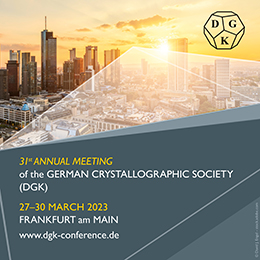
Outreach
Glasses and minerals in the spotlight at Sorbonne University
![Thumbnail [Thumbnail]](https://www.iucr.org/__data/assets/image/0006/155571/1200x800_3.jpg)
Making a diamond-type crystal model with jelly beans.
Eight years have passed since in 2014 crystallographers world-wide celebrated the International Year of Crystallography at numerous events. It was an excellent opportunity to explain the benefits of crystallography to a wider public from young to old. Since then small-scale public events have continued to take place, especially crystal growth competitions for school kids. In the UK the Big Bang Fair takes place annually, often with events related to crystallography whereas the French equivalent to this Fair is the ‘Fête de la Science’ or Science Festival, which is held every October with science events all over the country for schoolkids during working days and for all interested people during the weekends.
The year 2022 marked the commemoration of the bicentenary of René-Just Haüy’s death. Haüy was one of the most famous French mineralogists and one of the fathers of modern crystallography, thanks especially to his four-volume Traité de Minéralogie, which was published in 1801. This commemoration was the reason for the International Mineralogical Association to declare 2022 as the International Year of Mineralogy. In parallel, the UN General Council approved in 2021 a joint application by the International Commission on Glass (ICG), the Community of Glass Associations (CGA) and ICOM-Glass that 2022 was to be declared as the United Nations International Year of Glass.
In France, glass scientists, mineralogists and crystallographers decided to join their efforts to demonstrate the contributions of their science to society's welfare at the occasion of the 2022 edition of the French Science Festival at Sorbonne University under the title: Glasses and Minerals in the spotlight. The Pierre and Marie Curie campus of Sorbonne University was chosen for this thematic event, because of the historical context since the creation by imperial decision of the mineralogy chair at the Sorbonne in 1809.
Ten different themes were defined for this event: making mirrors from crystals; minerals and the living; making or ‘blowing’ glass; making geometric atomic models from jelly beans; light and crystals; making ice with pressure; growing salty and sweet crystals; the multiple facets of glasses; how to make stained glass panels; and how to look inside minerals and crystals with X-rays. In addition, special visits were organized to the magnificent Minerals Collection – 13,000 samples of which 1500 are displayed – which is also located at the Pierre and Marie Curie campus.
![[Fig. 1]](https://www.iucr.org/__data/assets/image/0009/155574/Fig.-1.png)
The Glasses and Minerals event attracted 533 school kids from elementary to high school on Friday 14 October 2022. The Pierre and Marie campus recorded 11600 visitors over the three days from Friday to Sunday 16 October for this event and the other events taking place on the same campus.
![[Fig. 2]](https://www.iucr.org/__data/assets/image/0010/155575/Fig.-2.png)
The ‘small talk’ with the visitors and the school kids was as usual delightful and very interesting. What do you say to an eight-year-old boy who asks you to look inside the crystal he just polished at another stand with the rotating single-crystal diffractometer model that you have shown him just before? I have cheated you, boy: it is just a model of a real diffractometer …. Maybe we can do the experiment with real X-rays later …. It was also the occasion to explain the fundamental differences between a glass and a crystal or mineral. Whereas crystalline matter is very precisely defined by the IUCr, a mineral material is not. A possible answer could be that a mineral is always natural and very often crystalline, but it can also be glassy. And for sure a crystal has an ordered atomic arrangement, but a glass has not. Much conversation covered of course all the applications that crystalline and mineralogical materials have in society and their role in everyday life.
![[Fig. 3]](https://www.iucr.org/__data/assets/image/0011/155576/Fig.-3.jpg)
These experiences of scientific dissemination and outreach to the wider public remain extremely valuable for both the scientists organizing them and also for the visitors who come to the events and maybe never realized the importance that mineralogy, crystallography and glass science have in their daily life. Fellow mineralogists, crystallographers and glass scientists, do not give up your efforts to present your work to non-scientists!
Copyright © - All Rights Reserved - International Union of Crystallography










